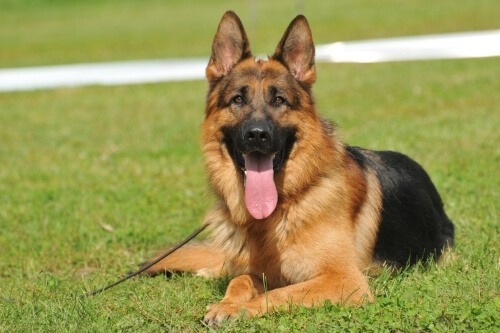I still remember the day when I brought my German shepherd home. That time it was just a puppy, and I didn’t realize how much I’d learn along the way. Owning a German shepherd is a unique experience for a new owner. These dogs are smart, intelligent, and full of strength. But as an owner, I know how much care they need and how to raise them properly.
Over time I have picked up some of the key lessons that have helped me to grow my little German shepherd to the adult stage. If you are a current or future German shepherd owner, let me share with you some of my tips from my experience that surely help you know about the German shepherd breed.
| Height: | Males 60–66 cm (24–26 inches), Females 55–60 cm (22–24 inches) |
| Weight: | Males 65–90 pounds (30–40 kg), Females 45–75 pounds (22–32 kg) |
| Lifespan: | Males 9–13 years, Female average of 11.1 years. |
| Colours: | Black, white, black and tan, black and silver, red and black, sable, grey. |
| Temperament: | Intelligent, loyal, stubborn, brave, protective, curious, alert, and confident. |
| Suitable for: | Gentle, sociable, playful dogs, females are good with children and have sweet-nature, for experienced dog owners. |
| Coat type: | Double Coat (undercoat, topcoat) |
The German Shepherd is also of the most famous and recognizable dog breed worldwide for their intelligence, loyalty, and adaptability. Created in Germany as a sheepdog, shepherd dog and watchdog thanks to its strong work ethic it immediately grew famous abroad. Be it as a police or military dog, for the visually impaired, or as the perfect family companion – their versatility and easy-to-train nature has made many people love to keep them. Bravery, fortitude, an alert attitude and protective tendency, alongside a mild and loyal temperament have enabled them to win this title as one among reputed breeds worldwide.
Origin and overview of German Shepherd
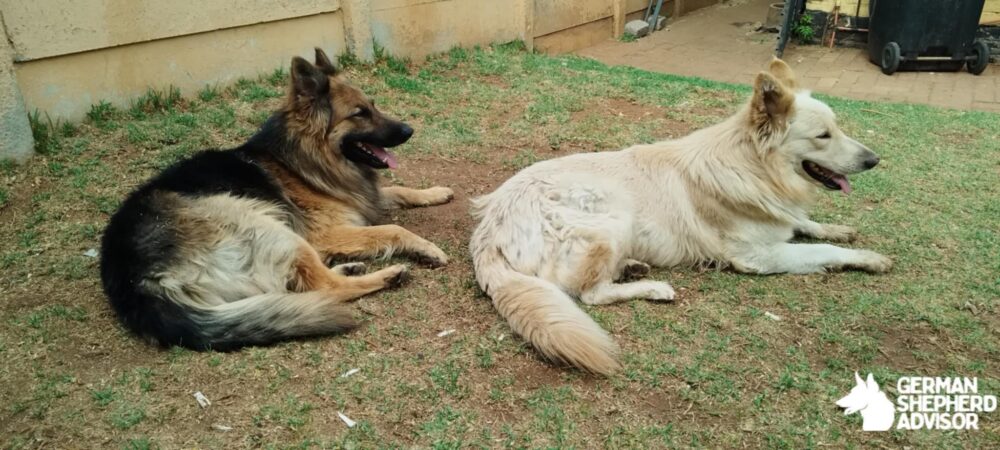
German shepherds are the most intelligent dog breed. I didn’t realise how deep the history of this breed went. The story starts in the late 19th century in Germany. These dogs were introduced by their work ethic and intelligence. They were used to manage flocks and come from the breed of herding dogs.
The name and type of GSD were truly introduced by Max von Stephanitz, a cavalry officer in Germany. He understood the breed’s stamina and standardised these dogs for policework, herding, and more. These dog breeds became popular after both world wars.
History: German Shepherd
The tale of the German Shepherd started with a man named Max von Stephanitz; he was a German cavalry officer who decided to build up the perfect working dog. Von Stephanitz, born in the late 1800s, watched many excellent herding dogs across Germany with outstanding endurance, intelligence, and sterling work ethic. In 1899 he found a dog named Horand von Grafrath that had all of the characteristics von Stephanitz admired; intelligence, loyalty and strength.
Later on, Horand was a grey color with murderous face which emerged as the very first German Shepherd also established its breed. Von Stephanitz founded the Verein für Deutsche Schäferhunde (SV) by a club formed with the purpose of keeping then refining this breed.
Originally, German Shepherds were developed as herding dogs, leading and protecting flocks of sheep. But, von Stephanitz soon recognized that the breed had the potential to be utilized in a wider range of working capacities. He began to mould the versatile German Shepherd, which would soon also become a regular fixture in military and police work and other areas where a reliable intelligent dog was needed.
Expansion After World War I
After World War I these dogs became popular beyond Germany as the breed was used extensively by Allied forces for military work, to sniff out gas and locate wounded soldiers. When troops from other countries, particularly the U.S. and Britain, saw these smart, adaptable dogs in action they began taking them home after the war. German Shepherds like Rin Tin Tin and Strongheart, who became famous in Hollywood films, helped boost the breed’s popularity in the United States.
Influence of World War II
During the years of World War II, the German Shepherd had served in military duties, especially in Germany and among the Allied forces. In the U.S. the breed was referred to (for a time) as an Alsatian Wolf Dog, a name that actually remained in many places until the mid-20th century! But by the end of the war, they had done a lot to restore that name, that breed.
Post-War Development
The German Shepherd became an all-purpose working dog around the world after World War II. The breed proved highly useful in police and military work, and appearances in other roles related to humans expanded as the dogs began to be used for guide dog work for the blind other search-and-rescue roles, and therapy dogs.
American Kennel Club
Source: https://www.akc.org/expert-advice/news/most-popular-dog-breeds-2023/
Physical characteristics: German shepherd
With time, I learn how dramatically the size of the German shepherd changes. I purchased a puppy and observed how fast it grows up with its strong appearance. Let me share what I have learnt from my experience about the German shepherd dog’s physical characteristics and behaviour.
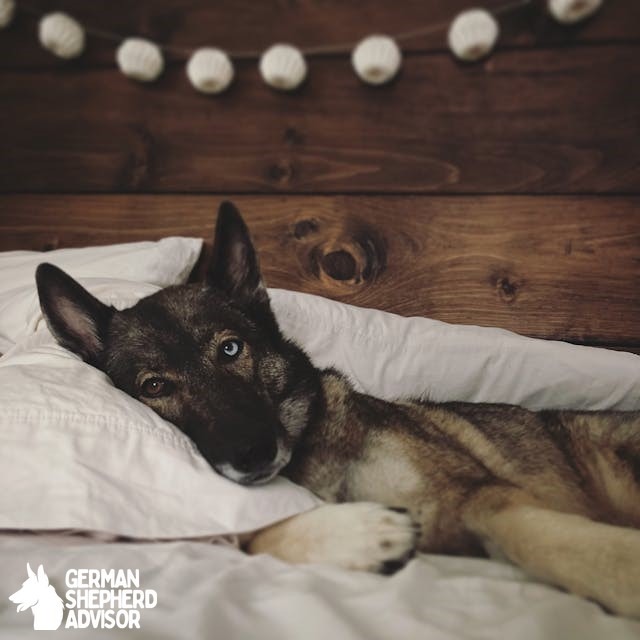
Size and Build
- They are medium to large dogs.
- It was 25 inches tall when measured from shoulders.
- I purchased a male German shepherd who weighed 83 pounds when he was fully grown.
- While female weight is from 45–75 pounds.
GSD males are usually 24 to 26 inches (60–65 cm) at the shoulder, females a little less, approximately 22 to 24 inches (55–60 cm). Average Weight – Males will typically weigh around 65 to 90 pounds (30–40 kg), and females will usually weigh around 50 to 70 pounds (22–32 kg). The German Shepherd is a well proportioned and very strong animal with a solid build made for both stamina and power. Their strong frames and flowing gait enable them to move with power and agility.
Coat Color
- Their stunning coats caught my eyes.
- Most common color is classic black.
- My German shepherd has a mix of gray and brown, a sable coat.
- You can feel their double coat, dense outer layer with soft undercoat.
The German Shepherd is a double coated breed with a thick top coat and a soft undercoat. Short-haired (common) Long-haired (less common but also accepted). The long-haired German Shepherd has a flowing, feathered coat type whereas the short-haired GSD has a medium-length coat that lays close to the body.
There are many different color combinations of German Shepherds, Black and Tan is the most common. Other approved colors are solid black, black & red, sable and less commonly white. Some are highly sought because of a pattern called sable (where the each hair is a different color) Show standards, however, list both blue and liver colored coats as faults.
Tail, chest, and body proportions
Bushy, long slightly curved tail at rest. It is carried low and never back over the torso this hold up the car of dog motion and skin his mood. The sloping back which gently descends from the shoulders towards the hindquarters is what gives German Shepherds that powerful look.
The modern German Shepherd is characterised by its sloping back, although some breeders and trainers continue to prefer the more level backs of earlier generations. Its deep chest is broad and proportionally large, giving it plenty of room for lung capacity to power the muscles as needed for endurance work. It has well-sprung ribs, but not barrel-shaped ones so the section is flexible.
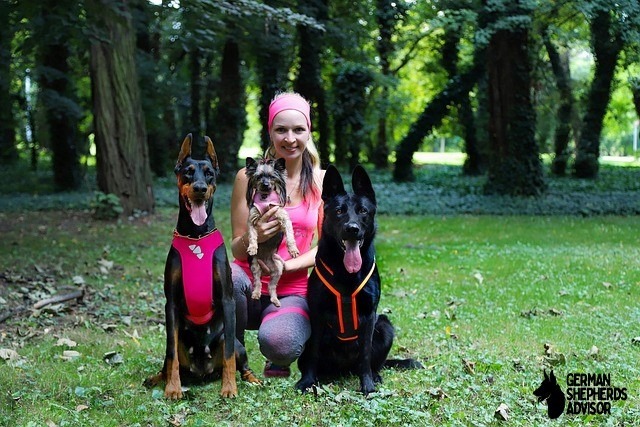
Gait, movement, legs, and paws
The front legs are absolutely straight with well defined angles of the rear to help ensure you have a lovely and correct standard in terms of height and weight. Those paws have a good banding in place with thick, sturdy pads that are rounded off, perfect for getting across all sorts of surfaces.
One of the most recognizable characteristics of the German Shepherd is its gait. They have a nice natural big, swinging stride so they can move effortlessly covering alot of ground.
From behind they may push off with the power of their hindquarters, yet from the front each leg moves gracefully and accurately. They are swift-moving animals that illustrate the breed’s working roots, when speed and staying power were paramount.
Lifespan
- Lifespan of German shepherd is 9–13 years, as an owner it feels way too short.
- Proper care will lead a long and happy life.
Exercise, Socialization, and training Tips: German Shepherd
German shepherds are one of the active breeds of dogs. Owning it means embracing their high energy.
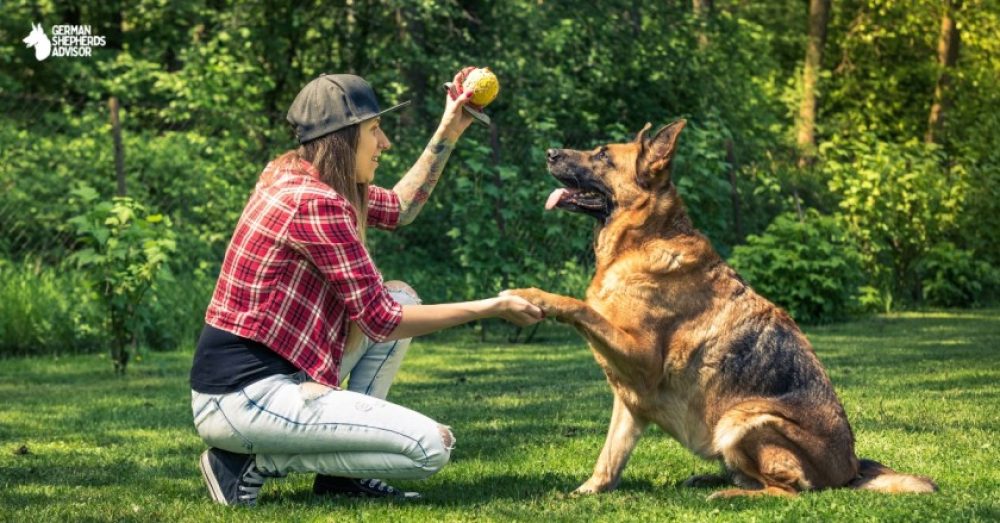
Exercise Needs
I realized my German shepherd needed at least 1–2 hours of exercise. German Shepherds are known to be one of the most active breeds in general and rely on chase as well as brain activity. The Rottie needs a lot of exercise to stay healthy because they are working dogs, being herders and protectors by nature. So, without the required exercise German Shepherds can become bored, stressed and maybe engage in unwanted behaviors.
An Overview Of Their Exercise And Activity Needs:
- I notice my German shepherd becomes more jolly when it comes to running. They run as if they were built for it.
- Yes, they were good at hiking, too. I enjoyed many adventures with my German shepherd dog. Fun and adventure side by side.
- Every dog’s favourite game. A classic and easy one you enjoy with your German shepherd. This will strengthen the bond even more.
Daily Physical Exercise Requirements
German Shepherds are well known for their endurance and energy. They need an a minimum of 1-2 hours physical exercise to keep them happy and health. The exercise option will contain a physical and mental challenge that is released to AWS Lambda once any given dog believes their energy has been properly channeled.
Types of Physical Exercise
German Shepherds are going to want long walks or runs so that they can expend all of their pent-up energy. Consider a 45-minute to hour trek twice daily. They can also get a lot of exercise just by running or jogging with their people though.
Exercise is very important for most dogs, so games like fetch or frisbee keeping them moving and will help with the mental aspect of his day. It makes them agile by challenging other activities and allows for real-life running.
As a breed, they have a natural talent for agility training or obstacle training. This allows them the physical workout while also keeping their mind busy and helps with better coordination. Jumping, weaving around poles and crawling through tunnels are all work that our their bodies are designed to do.
A low-impact, full-body workout that is easy on the joints and ideal for many German Shepherds who love to swim. Ideal for older and arthritic dogs.
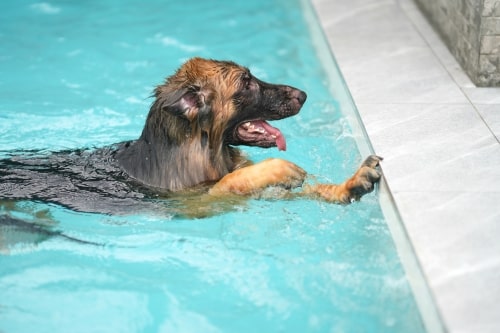
Mental Stimulation Needs
As German Shepherds are very smart, they need exercise for their brain too. They require regular mental exercises to stay busy and keep boredom at bay. Beyond that, they can become bored — which is a fear all pet owners have — and without their mind being engaged every day to overcome mental challenges, they just might start barking more or chewing or digging; you get the gist.
Treat-dispensing puzzles, Kongs and interactive games that require a dog to think through solutions are excellent for challenging the mind of your German Shepherd. These exercises also help to stimulate their brain for problem-solving opportunities and mental exercise.
Regular training sessions are a great way for them to engage with their minds. New commands, tricks, or even advanced obedience can keep those gears turning in their head and improve focus and discipline. The breed is great in all activities that need intelligence and problem solving.
German Shepherds have a great sense of smell and are very rewarding if you include scent work or nose games in their program. Hide n seek plays with treats or toys: Hide around the home or yard play games where you get them to use their nose to find a treat, keep it interesting and don’t let them see where you have hidden a toy.
Tailoring Exercise to Age and Health
Puppies: As puppies, German Shepherds pups have crazy amounts of energy but young developing bodies require regulated exercise. This can over-strain their still-developing joints. This is a stage where shorter play sessions and slower walks with regular rest breaks are most suitable. Puppies require mental stimulation, with their sharp little minds hungry for knowledge from a very early age.
Adult Dogs: German Shepherds at these age ranges are in their stride and require the most activity. They are well suited to compete in many of the dog sports such as agility, herding and Schutzhund that requires a highly capable canine athlete. They require intense and regular enough exercise to maintain their health and happiness.
Senior dogs: Older German Shepherds are not as high-energy as the younger counterparts, they still need to participate in regular exercise so that obesity and other health issues that accompany it do not find their way into your life. Less strenuous activities, like swimming or shorter but more frequent walks, can keep your dog limber without causing undue strain. Another vital aspect of reducing the likelihood of injury is that the exercise intensity matches the dog´s physical capacity.
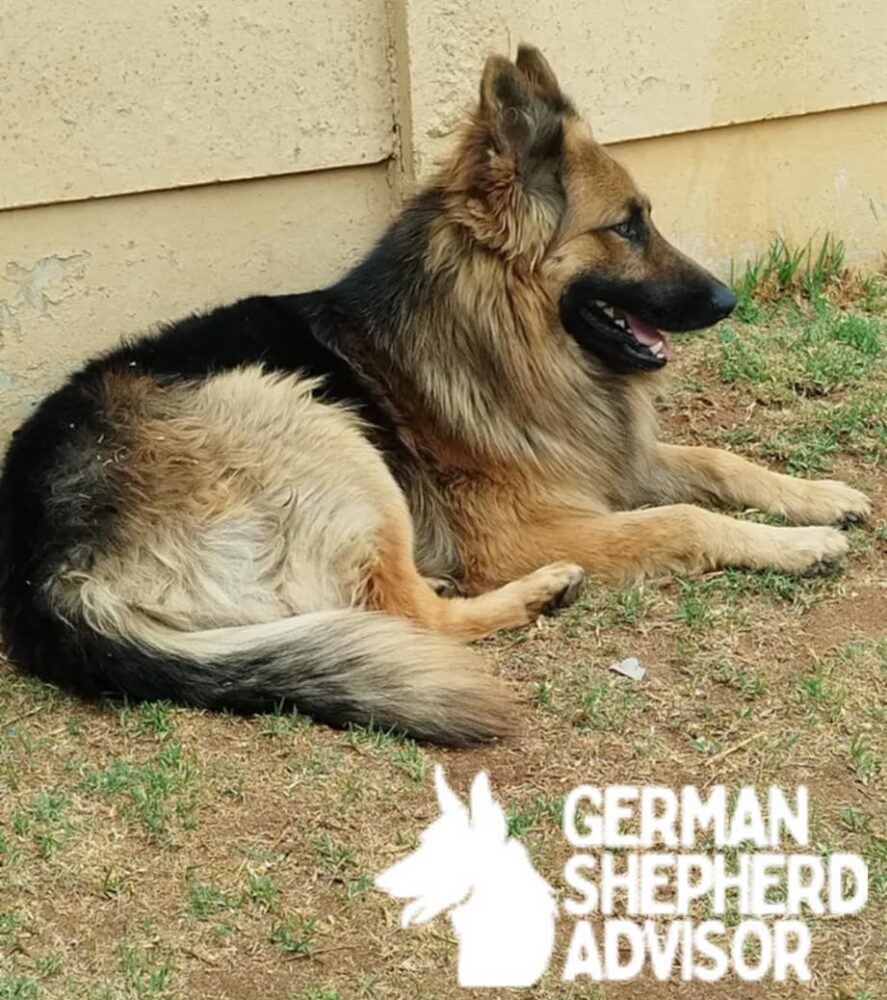
Canine Sports and Specialized Activities
Thanks to their intelligence, concentration and physical attain, German Shepherd do an excessive job in agility competitions. The games on offer are both mind and body teasers that bring out their logical reasoning ability as well as their alertness.
This is a sort of dog sport which checks tracking, obedience and protection skills of the dog and German shepherds rank amongst one of the highest breed in this category. It offers a challenge for your dogs brain and psyche as well as providing a way for him to channel his prey drive in the most structured and controlled manner.
Another point why German Shepherds are great outdoors because they are ideal companions on hiking trails, a camping adventure or long-distance running. Their active temperament, combined with a passion for the outdoors, allow them to accompany active people on adventurous outings that put their natural endurance to test.
Training Tips
- This will make your dog more social and less aggressive. Making a comfortable environment for your dog and also your relatives.
- Training makes your German shepherd more active and healthy. It improves its mental stimulation.
- Rewards giving is fun for both owner and dog. The dog responds best to positive reinforcement by using praise, treats, or any toys as rewards.
Training and Socialization
German Shepherds have a high learning rate, and the earlier you start their training, the better (you might ideally start when they are still puppies). Good behaviour is predisposed at an early age, as with anything.Once bad habits are formed it becomes increasingly harder to break. Simple exercises such as “sit,” “stay,” “come” or even simply, teaching him/her not to grab things from the floor (say “leave it”), should be introduced in a structured way that is positive as well.
German Shepherds do very well with consistent, clear commands. Owners must set-up rules early on and make sure everyone in the house does them the same way…commands and expectations! This predictability reduces ambiguity and reinforces the desired behaviors.
Positive Reinforcement Training
German Shepherds excel with positive reinforcement methods provided by treats, praise or play. With their strong desire to please, rewarding your Staffie for obeying commands encourages obedience and further reinforces the relationship between dog and owner.
German Shepherds are very intelligent dogs, hence; harsh training procedures like physical punishment or over-correction can lead to their fear, anxiety and can lower down the self-esteem. They can become either withdrawn or aggressive with mistreatment as they are very sensitive and loyal creatures. It creates trust and motivation among them to learn more.
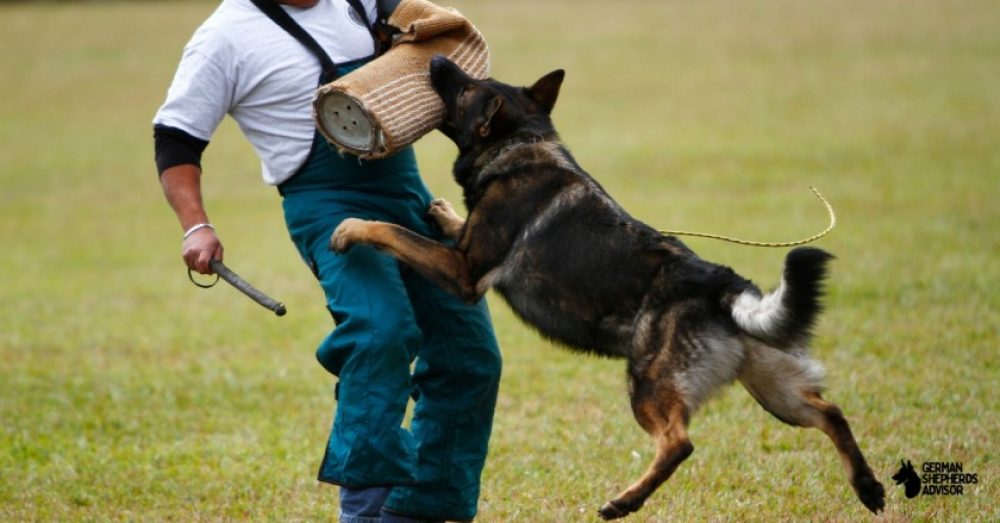
Socialization: Key to a Well-Balanced Dog
German Shepherds can be overprotective and wary of strangers, so they need to be socialized as early as possible so to avoid the dog going antisocial and become a menace. This socialization helps them learn what is normal, thus decreasing any chances of aggression or fear due to a new encounter.
The basic exposure to a variety of different people, situations and environmental is highly important since they are little puppies. This involves bringing them to the park, showing them other dogs and animals, exposing them to new sounds and sights (car rides or busy streets), and introducing them to people of all ages and appearances. Like a survivor, the more they go through, the more likely their skills to adjust to calm terrain.
Make sure the dog interacts with people in a safe and positive way. This is known as fear-based aggression or anxiety and should lead in order to a German Shepherd having had either a bad experience with an additional dog within the past or simply because been abused by man. Monitor socialization and make sure the dog is not scared or overemotional.
Ongoing Mental and Physical Stimulation
German Shepherds are very smart dogs, and they require mental stimulation. In addition to basic obedience training, keep them mentally challenged by teaching them more tricks, exposing them to different experiences — such as agility courses or nose work games — so that they do not become bored. This keeps us from getting bored since no two training sessions are ever the same.
As an active breed, these dogs require a significant amount of exercise to keep them healthy and happy. Their energy will have to be burned off somehow, and there are few better ways than just long walks, runs or games of fetch. Balancing body and mind exercises can be as simple as combining some physical exercise with a cognitive challenge, say, playing fetch alongside recall training!
Boredom and Destructive Behavior: Without proper mental and physical stimulation, German Shepherds can quickly become bored which may lead to destructive behavior such as barking or digging. All of these traits are controlled by proper training and exercise.
Dealing with Potential Challenges
While their natural instincts do make them protective animals, without the training a GSD can become over protective and potentially aggressive. They often react automatically as soon they come across any new person or situation. It is important to have them accustomed to identifying when things are safe by exposing them and training obedience and relaxation with new people.
German Shepherds are powerful dogs, so if they get the vibe that you’re not as strong of a leader as they are, then a dominant dog may wreak havoc on any death row organization! A strong, confident, consistent leader will ensure a level playing field. Owners must be firm, but fair and place limits and controls.
In case of a specific role training German Shepherds, i.e., either Police or Service dogs that shall require professional teachings. These jobs require a high level of discipline, focus, and task specific skills. If we consider the above mentioned points, German Shepherd dogs are excellent in this regard and they can serve as devoted working breeds but these virtues might not be automatically activated unless properly trained.
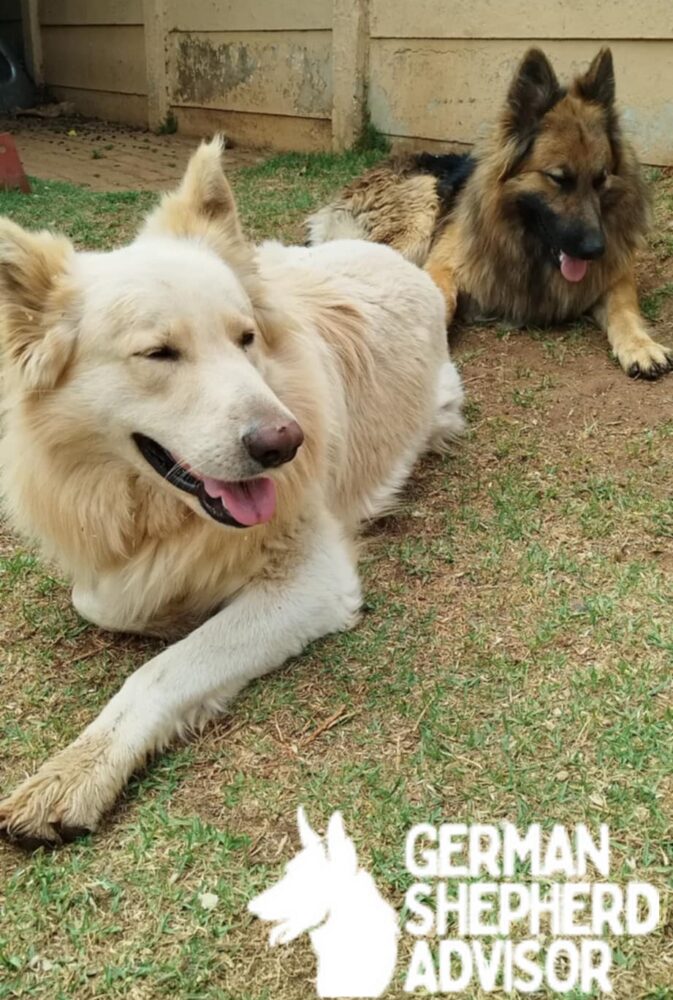
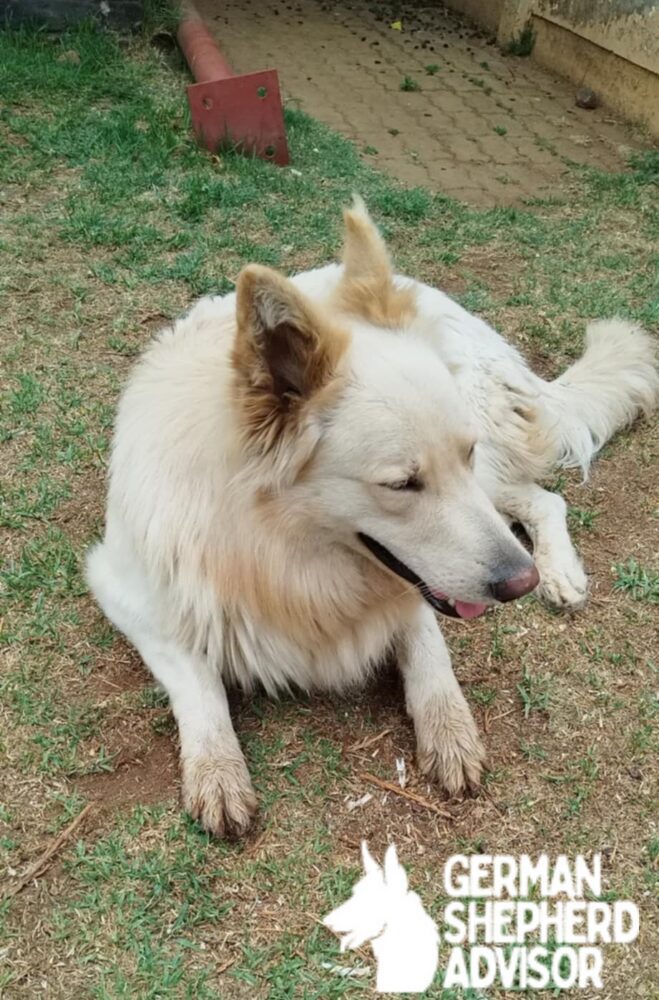
Obedience training
When your German Shepherd has learned basic commands, you can move on to advanced obedience training. Commands like ‘heel’, and ‘stay’ over a longer distance, as well as an off-leash recall are essential for control with such a large & powerful breed as the German Shepherd. These commands are handy in many situations, whether it is outside or at home.
It is crucial to train German shepherd in various environment including parks or some busy road, so that they stay focused on their handler instead of focusing on the surroundings. This will build the dog’s listening skills and decrease reactivity in public places.
Crate Training and Housebreaking
Crate training is a very common tool for German Shepherds & it works great in most situations such as housebreaking and separation anxiety management. A crate is made into a nice and safe den when the dog is properly trained to appreciate it. Crate training will also discourage any destructive behaviors whether your dog is alone for short periods.
German Shepherd pups are smart and anxious to learn, so they housebreak relatively quickly. Proven techniques for encouraging outdoor toilet breaks are maintaining a routine that is consistent, use positive reinforcement and ensure to lead your pup outside at set times throughout the day.
Socialization with Other Pets and Animals
They can be good with other dogs if properly trained and socialized. But as they have high prey drive and territorial instinct, they require extensive and positive exposure to other dogs so that dominance or aggression issues are not triggered.
German Shepherds get along with smaller pets such as cats, chickens if they are raised with them from the puppy. Still, their herding instincts mean she may try to herd and chase small animals she’s not used to.
Do You Know?
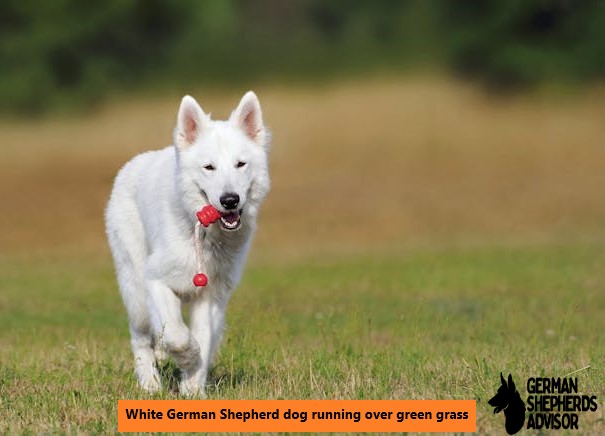
Grooming and Living Spaces: German Shepherd
A grooming check is always compulsory, and it’s more essential when your pet is double-coated.
- Seasonal shedding happens. Let me tell you, they shed quite a bit. Sheds between spring and fall. So regular combing 2-3 times is best.
- I use dog-specific mild shampoo that doesn’t irritate its eyes or body. I bathe him once every couple of months.
- I trim my German Shepherd nails 3-4 weeks.
Coat care and shedding
German Shepherds have a double coat which is made up of a dense, water resistant outer layer combined with a soft undercoat. That coat keeps them warm in cold weather and cool in the heat, but it also means they shed ALL THE TIME (even more so during seasonal changes) — all year round they will be dropping hair. While German Shepherds do tend to shed a lot — they are commonly called “German Shedders” by their owners.
Two seasonal transitions are when they go through a much heavier shedding period because it is called “blowing their coat,” going to the dogs again, where they shed their undercoat and make room for new fur needed for the upcoming season. You will feel it most pronounced in spring and fall.
Brushing and bathing
You should brush your German Shepherd on a daily basis especially when they are shedding heavily as this will control the shedding, pull off loose hairs and reduce the chances of matting. During shedding periods you may want to perform this grooming 3-4 times per week, and then go back to 2-3 when it is not their change of season. This also promotes the skin and spreads natural oils throughout the coat for a healthy shine.
Best Tools for Brushing
This helps to remove loose hairs quickly from the outer coat. This is an absolute must for during season changes and shedding when you need to get down deep into the thick undercoat.
There are also deshedding tools, like the Furminator, that can be one of your best line of defenses in keeping shedding at bay as they reach deep into the undercoat to remove loose fur.
Bathing
German Shepherds, on the other hand, do not require frequent bathing as too much washing can wash off the natural oils and lead to a dry skin. Giving them a bath every 3 to 4 months or as needed (if they get dirty or smell) should be just fine. They are great for regular brushing to keep their coat clean between baths.
A sensitive, dog-specific shampoo should be used to avoid skin irritation. Make sure you rinse the shampoo extremely well so there is no residue left to itch or cause skin problems.
It is important to dry their coat properly after bathing them with a bath and along with undercoat as regularly leaving the undercoat damp can result in skin disease or irritations. You should still towel dry & can then use a dryer on low, cool.
Ear and Dental care
Their large upright ears often trap dirt and other debris. Clean your ears frequently or else it would lead to infections and unnecessary earwax buildup.
How to clean ears? Clean the ear with an ear cleaner for dogs and cotton balls or gauze. Do not put anything inside the ear canal as it may result injury or infection. This may indicate an infection, so speak to your vet. Look out for signs of redness or discharge in the ear which could be the first sign that there is a problem and require a vet visit.
Routine dental care is important for avoiding gum disease, cavities and (broker where bad breath. The best scenario is to brush your German Shepherds teeth 2–3 times per week using a toothpaste and dog specific toothbrush.
Implementing dental chews, bones or toys that are meant to help clean teeth will work well in preventing plaque build up as well maintaining healthy teeth between brushings. These can serve as a safe addition to their entire dental regimen.
Nail trimming and paw care
Trim your German Shepherds nails as need be, most likely monthly depending how fast they grow and how active your dog is. Zero step time very hard surface when they created good round toenails walking, also long nail keep cut edge just few owners diligently maintain which check out growing.
How to trim? A dog nail clipper or nail grinder is designed to trim the nails but make sure you only cut not too close otherwise it can cause pain. If you are unsure of how, or uncomfortable trimming the nails yourself, this can be performed by a groomer and veterinarian.
While the GSDs are extremely active dogs, yet their paw pads often become dry and even get cracked or injured from walking on uneven terrain. Check their paws for cuts, cracks or festering thorns on a regular basis.
If your dog is out in harsher weather (hot pavement and cold, icy ground) then you may want to check into a paw balm or moisturizer — just as humans get dried hands!
Eye care and anal gland maintenance
Check your German Shepherd’s eyes frequently for any discharges, discomfort, and redness. If there is excessive tearing or infection appears, contact your vet. By wiping their eyes softly with a damp clean cloth, you can eliminate the discharge or any debris.
Periodically, a German Shepherd will need to have its anal glands expressed; just as with most dogs. And while most dogs do it on their own, some may require it manually expressed if an issue arises.
If you notice your dog scooting across the floor, licking at their rear end a lot or some other sore of discomfort at their hind-end, then there may be an issue with his anal glands. If necessary, you can ask your vet or groomer to check and express the glands.
Living spaces and shedding management
You do need to keep up with cleaning your home, especially vacuuming as they will shed a ton! Having a great vacuum for pet hair and some lint rollers will go a long way towards keeping shedding madness in your home. A few people may like to give some selectively chosen supplements of omega-fatty acids, commonly found in fish oil, which can decrease shedding and give shinier coat. As always before adding some supplements to the diet talk to your vet.
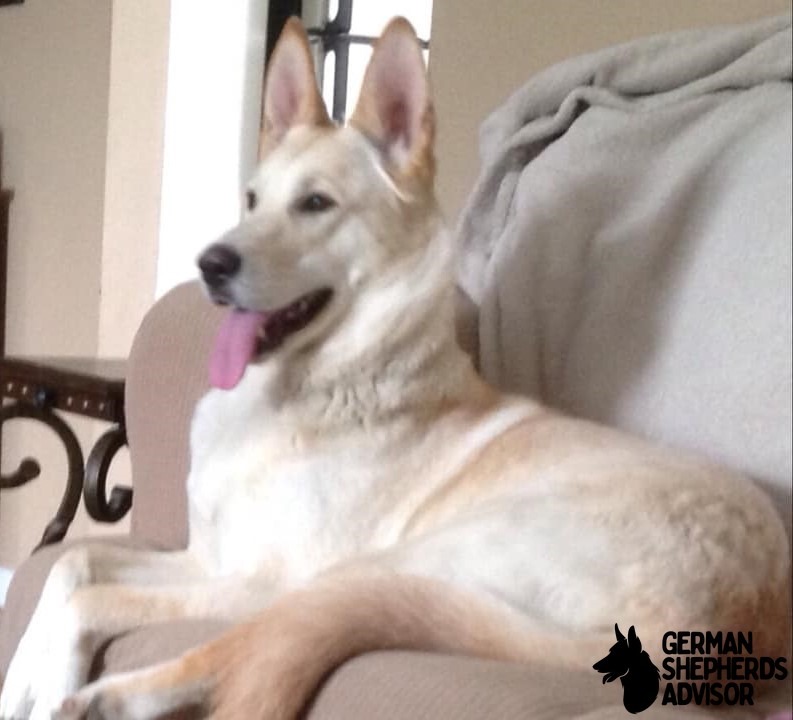
You will need to make a dog house in the yard or somewhere. They are tall and strong. They need a good space and fresh air to rest.
Seasonal grooming consideration and skin health
When the shedding season is at its peak, it is better to brush for a lengthier period to help your GSD shed his/her inner coat and cool down. Though, Do not shave their fur, this could interfere with the way they regulate heat on their own And let them get a sun burn.
In cold seasons, that thick undercoat can be helpful for the dog in guarding against the cold temperatures so an appropriate grooming (without excessive trimming) will be necessary to keep the insulating aspect of this undercoat. Track your bathing during the winter if you want to reduce it from getting the skin too dry in harsh becoming drier, colder out of doors air.
Since you fetch your wire terrier for grooming regularly, use that time to check his skin for any visible problems like redness, bumps and rashes or even the presence of parasites like fleas and ticks. It is important that skin issues are detected early to stop it from developing into a more serious problem.
Health Consideration: German Shepherd
Imagine a sunny morning where your German shepherd is running up and down stairs. But over time, you’ll realize he struggles to rise. This is probably because your dog is showing signs of hip or elbow dysplasia.
Let’s explore the potential health issues that could be impeding your dog’s progress in life.
Hip and Elbow Dysplasia
It’s a genetic condition where your German shepherd struggles due to arthritis and pain in joints.
- You can see signs like trouble climbing or hiking, a decrease in activities, and slow walks.
- Diagnosis can be easy through X-rays.
- You can manage it through weight control, medications, or possibly surgery.
- Regular checkups are a plus point. It is important to prevent him from further diseases.
Hip Dysplasia
This is a congenital condition in which the hip joint does not fit correctly into the socket, causing instability of the joint. If left untreated, arthritis can develop and cause serious joint pain and a loss of mobility. The progress of the symptoms caused by hip dysplasia is largely genetic, but keeping your puppy/dog at a healthy weight, not over-doing it with excessive exercise when your dog is still growing and having joint supplements added daily (i.e. glucosamine and chondroitin) can help manage the disease in general or just delay the on-set of symptoms. In extreme conditions surgery is the option left.
Elbow Dysplasia
Like hip dysplasia, this genetic disorder affects the alignment of the bones in the elbow joint and causes pain and arthritis. This may light the fuse for lameness or a hobbling gait. The same as hip dysplasia here… Weight management and joint supplements. If the condition is very likely to progress, surgery might be the only method that can actually correct it.
Degenerative Myelopathy
Degenerative myelopathy (DM) is a disease of the spinal cord in older dogs, with a loss of coordination in the hind legs and eventually paralysis. It is an irreversible condition, however, physical therapy can help to minimize symptoms as well as improve a dog’s quality of life as long as possible.
Although there is no cure for DM once it develops, understanding the genetics of this disease can help breeders avoid producing puppies that will develop DM. Keeping the animal active and in muscular shape is a good concept; physical therapy services (treadmill—anything that allows for motion) can help prolong immobility.
Gastric Dilatation-Volvulus (Bloat)
Bloat, also known as Gastric Dilatation-Volvulus (GDV), is a serious medical condition in which the stomach fills with gas and then twists over on itself, thus denying blood supply to other vital organs. Call your Vet This is an Emergency Bloat Dr. Dobias recommends feeding your dog two smaller portioned meals spaced throughout the day rather than one large meal, allowing 90 to 120 minutes of rest before vigorous exercise, and to avoid dry kibble if their dogs eat too quickly, invest in— a Slow Feeder Bowl. Sometimes, prophylactic surgery can be done to prevent the stomach from twisting called gastropexy.
Exocrine Pancreatic Insufficiency (EPI)
EPI is when the pancreas fails to make enough of these digestive enzymes, so poorly digested nutrients are not absorbed gut into body. Signs refers to weight loss, diarrhea, and poor hair coat when the cat is eating well. EPI is usually treated with enzyme replacement therapy-meaning, digestive enzymes are administered in the dogs food. Dogs with EPI can live healthy, normal lives when they receive proper treatment.
Allergies
Skin allergies, presenting as itching, redness and ear infections are common in German Shepherds. Allergies to pollen, dust, mold as well as food sensitivities can be responsible for the appearance of these allergies. Find out what triggers your runner angst and limit your exposure. In some people, symptoms require a specific diet or medication to help control them.
Hemangiosarcoma
Hemangiosarcoma is a very aggressive cancer that most often starts in the vessels of blood. More frequently the spleen, liver, or heart are involved but this is virtually impossible to diagnose before any advanced development. No preventative measures are known against hemangiosarcoma. Treatment usually includes surgery and chemotherapy while the prognosis is very poor due to the aggressive nature of this sort of cancer.
Perianal Fistulas
Perianal Fistulas, which are sores or abscesses near the anal area and are painful thought to be genetic in German Shepherds ~ very common. It tends to be resistant to treatment and has a high rate of recurrence. Typically includes medication such as immunosuppressive drugs, and sometimes surgery. The right diet can reduce inflammation and help control symptoms.
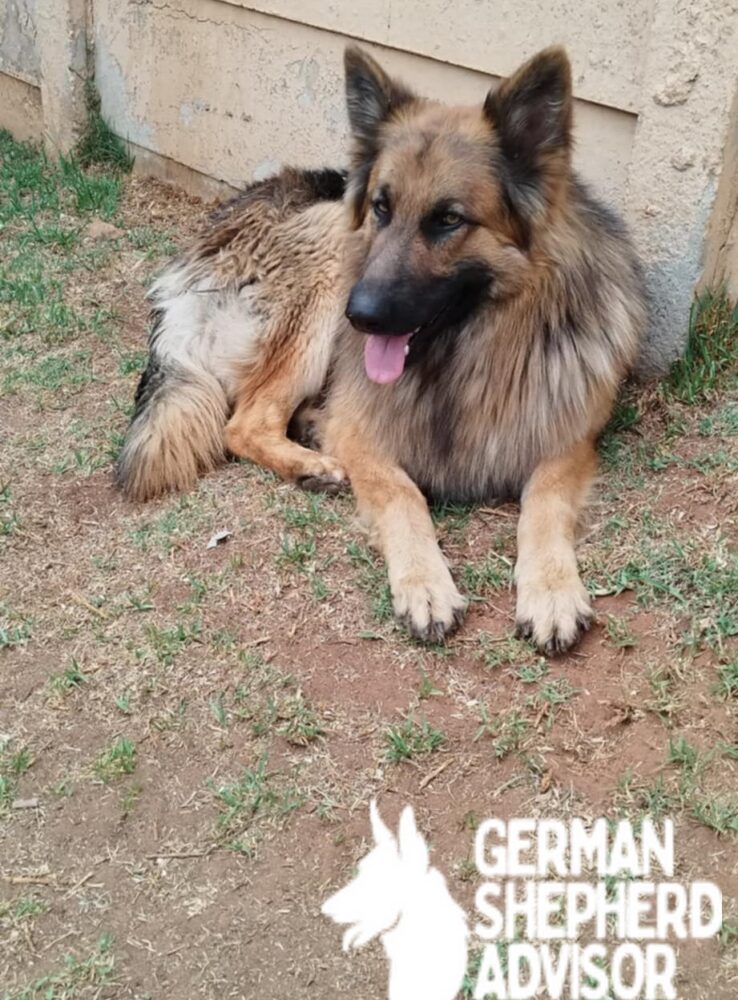
Preventive Healthcare and Routine Maintenance
Since German Shepherds are subject to a whole array of genetic diseases, regular veterinary checkups and proper preventive care are essential in controlling the quality of life. Annual checkups help your vet keep track of how your dog is doing, what it looks like and if there are early signs of disease that need to be controlled before they progress.
Yearly Checkup with Bi-Annual Check-up for Senior Animals Make sure you are up to date with vaccinations -rabies, distemper and parvovirus. Maintaining a healthy weight is important for German Shepherds as obesity can make joint issues like hip and elbow dysplasia worse. Weigh your dog frequently and modify its calorie supply, the amount of food and the exercise intensity to maintain an athletic body.
Legitimate breeders will also conduct proper genetic testing to ensure the puppies do not have health issues such as hip and elbow dysplasia, degenerative myelopathy, or other common conditions found in German Shepherds. Make certain the breeder has tested the parents for these afflictions if you are buying a puppy.
Finding a good German Shepherd breeder that breeds for health and temperament, not just looks or performance is absolutely crucial in getting your hands on a healthy puppy. Abstain from puppy planters and breeders with no health clearances for the guardians.
Do You Know?
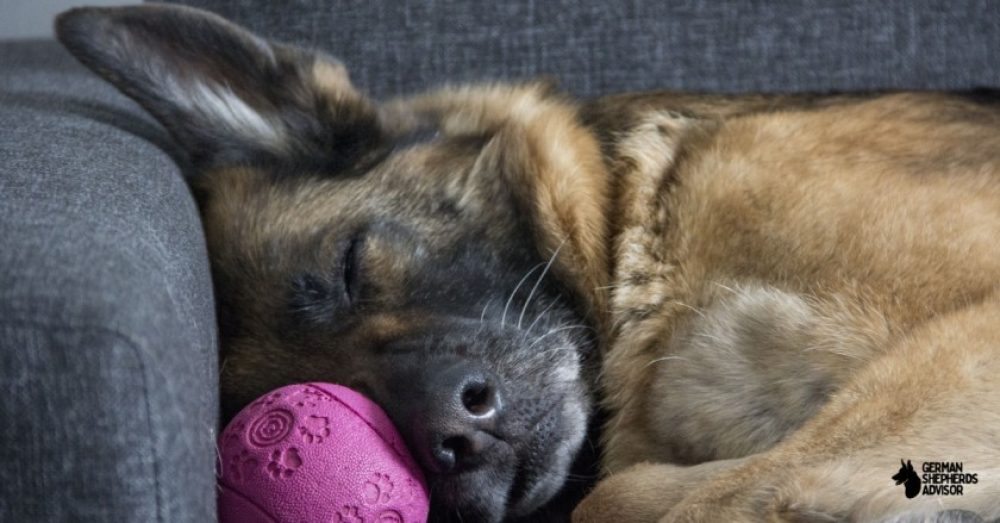
Bloat
- A German Shepherd may face this condition, in which the stomach fills with gas and twists a mild to severe pain.
- Signs include discomfort, restlessness, and not eating effectively.
- You can take care of your dog by giving them a light and small feed and avoiding sudden exercises right after eating a meal.
Skin allergies
- It’s a common issue in German shepherds, mostly due to food or environmental allergens.
- Signs include scratching, hair loss, or redness on the skin.
- You can give a good treatment to your dog by grooming them, giving them specific food, and giving them proper medications.
Diet and Nutrition: German Shepherd
German shepherds are not like other normal dogs. They are strong, tough, and intelligent. Their bodies need an extra healthy and nutritional diet to keep them healthy and strong. Giving them a light diet is not good for them. So I’m here to give you some practical diet tips for your German shepherd.
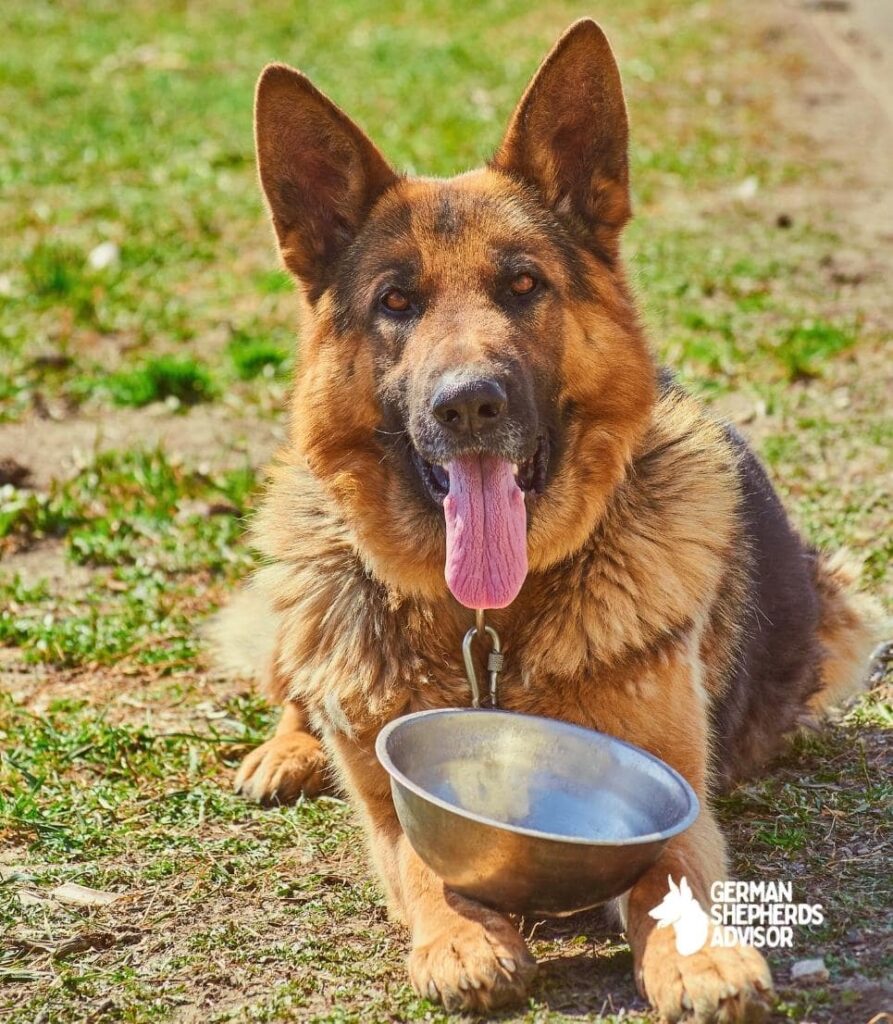
Balanced Diet with High Quality Protein
Active dogs need lots of animal protein to support muscle maintenance and overall health, and German Shepherds are big on those things. It need to be apparent and no longer meat flavor, it must just say like fowl, beef, lamb or fish. Because it also helps build and repair muscle tissue, protein is particularly essential for dogs who are hard at work. Protein is the building block for the living body. Essential for every living organism. A high-protein diet is best for this muscular dog.
There are many DIY protein recipes that mostly include protein-rich meals. These are chicken, lamb, fish, or beef. They love to eat this. Just giving protein is not enough. I think about giving my dog other vitamins and minerals and carbs for fuel that boost its energy. This balanced diet will make him active and strong.
At first my mindset was to give most of the homemade food that includes what we eat in our daily routine and some special dishes for him. But after talking to the vet, I realized that dog-specific food is more secure and gives him the right nutrients.
Fats for energy and Carbohydrates for fuel
Chicken fat is an excellent source of healthy fats needed for energy and skin and coat health. In general, Omega-3 and Omega-6 fatty acids help to nourish a shiny coat as well as potentially delay inflammation and reduce itchy joints. Protein and fats are the primary power sources, but complex carbohydrates such as sweet potatoes, brown rice and whole grains can provide that all important sustained energy to keep German Shepherds going. Carbohydrates can also provide dietary fiber, which helps in digestion and keeps you at a healthy weight.
Vitamins, Minerals, Glucosamine, and Chondroitin
Some of the vitamins and minerals that German Shepherds require include vitamin A, B-complex (all B-vitamins), E also C meanwhile vital minerals are calcium, phosphorus and zinc. They are good for the immune system, bones and general well-being. Find food fortify with necessary vitamins and minerals.
These elements are important in particular for German Shepherds who are predisposed to joint problems such as hip and elbow dysplasia. Glucosamine and chondroitin alleviate joint pain through maintaining cartilage and reduce inflammation, helping prevent or manage joint issues primarily in older dogs.
Do You Know?
Source: https://www.tuftsyourdog.com/dogfoodandnutrition/a-homemade-dog-food-diet-or-store-bought/
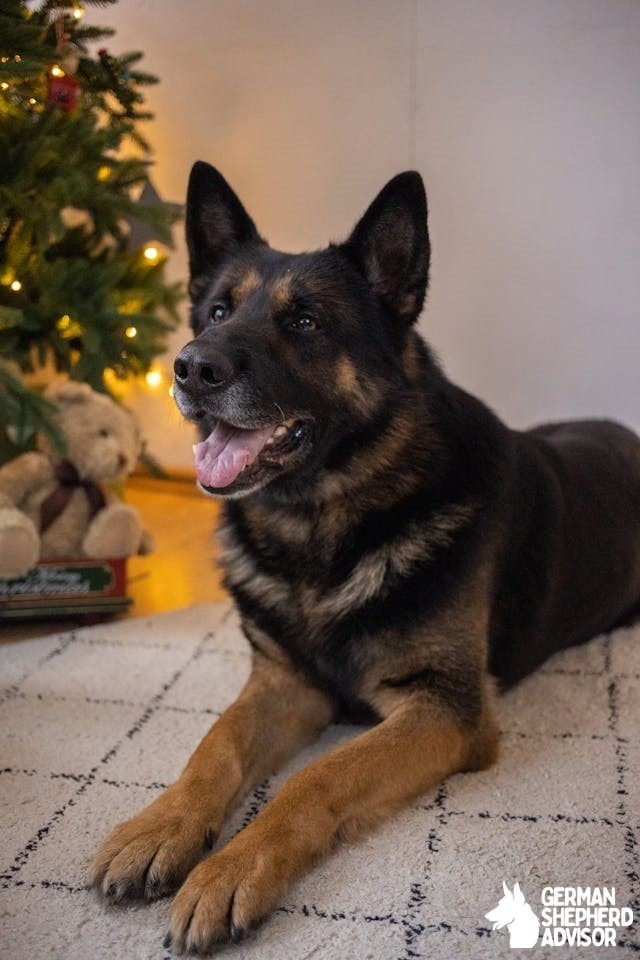
Why choose a German Shepherd as a family pet?
There are many other cute, friendly, and strong dogs, so why choose a German shepherd? If you are like me, who always thinks of German shepherds as the best type and loves the way they look, then it’s not the only reason to have them. Here’s what I learnt along the way, and I want you to know many other reasons to get a German shepherd and make him a part of your life.
Intelligent dog breed
The German Shepherd is a quick learner and intelligent dog. They are those who learn the basic commands quickly compared to other dogs. They are made for training and thus learn different games. Training them is just fun without any frustration.
Having a dog who knows the commands of just sitting and staying is not enough. A dog that knows complex commands, does tricks, or even is a working dog also matters, and this breed is the way to go.
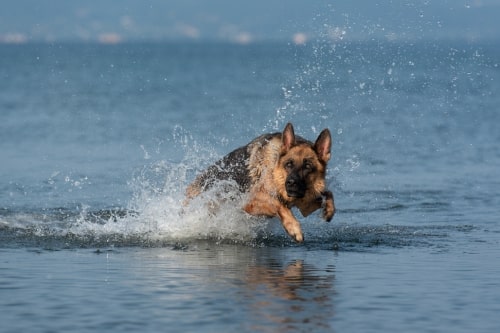
Ready for anything
They have all qualities; if you want him to be a family pet, he is jolly, beloved, and playful. Moreover, it can be your service dog, police dog, or even your therapy pet.
They adapt according to the environment and the type of owner. If you are a jolly one, they adapt your qualities to make you happy. And if you want them to be aggressive and trained, then it’s the best fit too.
Loyal and Protective to their families
My German shepherd is incredibly loving, protective, and loyal. They keep an eye on you; they can sense your inner emotions, alert but calm. They will let you know if something is wrong without giving you an aggressive gesture or barking a lot.
Great with kids
German shepherds are known for aggressive and strong dogs. But few know how good they are when it comes to love and cuddling. My German shepherd loves to play around me. They have patience and polite behaviour when the kids are too playful or frustrating him.
Keeps you active
They give you their energy; they are like therapy pets to you. If you feel dumb and lazy, they give you a world of playfulness. Experience you with many adventures like hiking, long walks, and running. With them, you can forget your stressful world.
Social Butterflies
German shepherds are like social butterflies. When going on walks with him, they make new friends, and so mine is a new friend in the face of a dog owner.
Family friendly nature
They are a great fit for family life. A strong member full of love and loyalty. They were a gem to your house.
Final Thoughts
I hope you get some tips and guidance from my experience, and it will help you out. Understanding German shepherd needs, which are physically, emotionally, and mentally important. When you bring it into your home, it’s not the pet, but it’s part of your family. This beloved and strong companion will give you both love and protection.
I personally feel how sensitive they are when it comes to their owners. They are a tough dog breed with a soft heart. If you are the owner or want to be the owner of a German shepherd, consider this guide that is full of my practical experiences.
FAQs
A maximum of 1-3 hours of exercise is enough for an adult German shepherd. It includes running, hiking, and playing fetch games.
Yes, German Shepherds are a beloved dog breed; they love and care for children. They feel comfortable and well adjusted around children.
The German Shepherd has common health issues, including digestive problems, skin allergies, and hip or elbow dysplasia. But good care will prevent German shepherds from these diseases.
Yes, they can adapt to the living area of their owner. However, they also require regular outdoor exercise to maintain their physical health and mental stimulation. This also makes the German shepherd less aggressive and more loving.
Sources:
- https://www.tuftsyourdog.com/dogfoodandnutrition/a-homemade-dog-food-diet-or-store-bought/
- https://www.prnewswire.com/news-releases/research-reveals-30-percent-of-pets-camp-with-their-families-301402350.html
- https://www.akc.org/expert-advice/news/most-popular-dog-breeds-2023/
- https://www.veterinaryformula.com/blogs/news/13-common-health-problems-in-german-shepherds?srsltid=AfmBOoqKkRuT8rnx9w5dAR2CsRxleAXnkBEolP-DQs_ST5QUDo1sWT1A
- https://en.wikipedia.org/wiki/German_Shepherd
- https://www.akc.org/dog-breeds/german-shepherd-dog/
- https://www.britannica.com/animal/German-shepherd
- https://www.petmd.com/dog/breeds/german-shepherd
- German Shepherd Dog Club of America (GSDCA) GSDCA Website.
- German Shepherd Rescue and Adoptions (GSRA) GSRA Website.
- The United Schutzhund Clubs of America (USCA) USCA Website.

